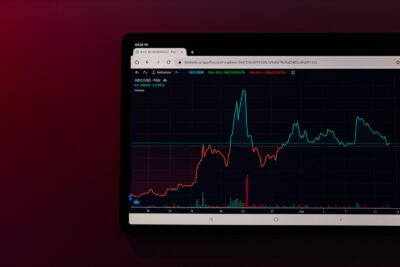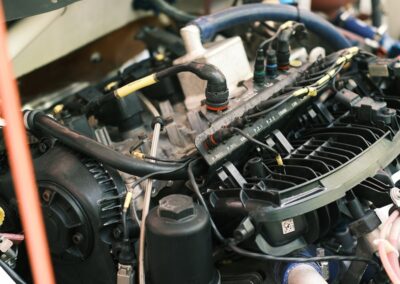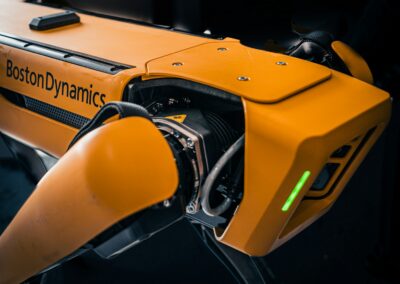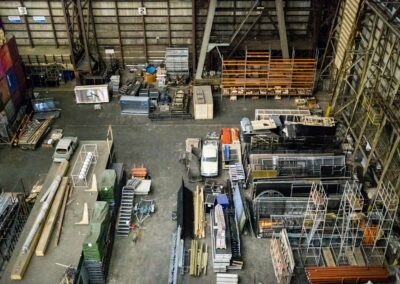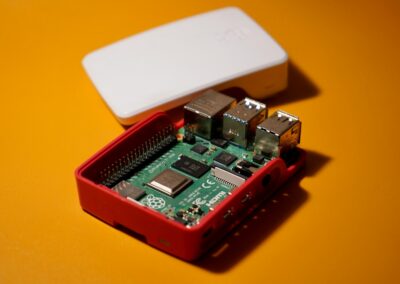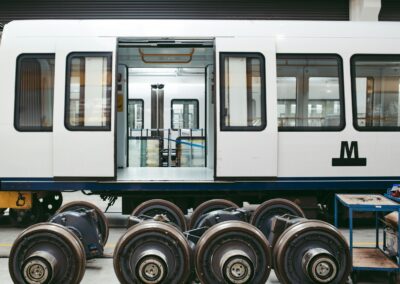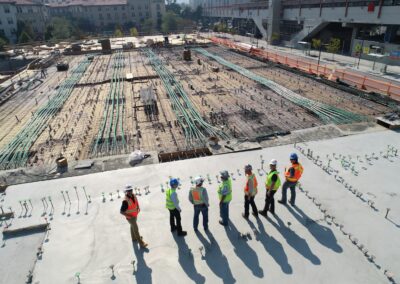Revolutionizing Maintenance Practices through IoT Technology
Understanding the Role of IoT in Predictive Maintenance
The implementation of IoT-based predictive maintenance for industrial machinery is transforming how industries manage their assets, significantly improving the lifespan and efficiency of equipment. In regions like Riyadh and Dubai, where manufacturing and industrial sectors are rapidly expanding, the adoption of smart maintenance strategies powered by IoT technology is becoming increasingly essential. By leveraging IoT sensors and data analytics, companies can predict when machinery is likely to fail and schedule maintenance before breakdowns occur, thereby minimizing downtime and extending the operational life of their assets.
IoT-based predictive maintenance involves the continuous monitoring of machinery through connected sensors that collect real-time data on various operational parameters, such as temperature, vibration, and pressure. This data is then analyzed using advanced algorithms and machine learning techniques to detect patterns that indicate potential issues. For example, a slight increase in vibration levels might suggest that a component is wearing out, allowing maintenance teams to intervene early. This proactive approach not only prevents costly breakdowns but also ensures that machinery operates at peak efficiency, reducing energy consumption and operational costs.
Maximizing Machinery Lifespan with Predictive Analytics
One of the key benefits of IoT-based predictive maintenance for industrial machinery is the ability to maximize the lifespan of equipment. Traditional maintenance strategies, such as reactive or scheduled maintenance, often result in either too little or too much maintenance, both of which can shorten the lifespan of machinery. Reactive maintenance, which occurs after a failure, can lead to extensive damage that might have been avoided with earlier intervention. Scheduled maintenance, on the other hand, may involve unnecessary part replacements, leading to premature wear and increased costs.
With predictive maintenance, maintenance activities are precisely timed based on the actual condition of the machinery rather than fixed schedules or post-failure interventions. In industrial hubs like Riyadh and Dubai, where the continuous operation of machinery is critical to economic productivity, this approach ensures that equipment remains in optimal condition for as long as possible. By extending the life of machinery, companies can reduce capital expenditures on new equipment and allocate resources more efficiently, ultimately improving their bottom line.
Improving Operational Efficiency and Reducing Downtime
Another significant advantage of IoT-based predictive maintenance for industrial machinery is the enhancement of operational efficiency. Unplanned downtime due to equipment failure is one of the most significant challenges in the industrial sector, leading to lost production time, missed deadlines, and increased costs. IoT-driven predictive maintenance reduces the likelihood of unexpected breakdowns by identifying and addressing potential issues before they escalate.
In practice, this means that industrial operations can run more smoothly, with fewer interruptions and delays. For example, in a large manufacturing facility in Dubai, the use of predictive maintenance could prevent a critical piece of machinery from failing during a peak production period, ensuring that the facility meets its production targets. Additionally, by minimizing the frequency and duration of maintenance activities, companies can achieve higher levels of productivity and operational efficiency. This not only enhances the reliability of the production process but also provides a competitive advantage in the market.
Implementing IoT-Based Predictive Maintenance in Industrial Settings
Challenges and Solutions in Adopting IoT Predictive Maintenance
While the benefits of IoT-based predictive maintenance for industrial machinery are clear, the implementation of such systems comes with challenges that companies must address to ensure success. One of the primary challenges is the integration of IoT technology with existing machinery and systems. Many industrial operations rely on legacy equipment that may not be easily compatible with modern IoT sensors and platforms. However, with the right approach and technology partners, companies can retrofit older machinery with IoT capabilities, allowing them to benefit from predictive maintenance without the need for complete equipment overhauls.
Another challenge is the need for robust data management and analytics capabilities. The vast amounts of data generated by IoT sensors require sophisticated tools and expertise to analyze and interpret. Companies in Saudi Arabia and the UAE, where industrial innovation is a key focus, must invest in data analytics platforms and skilled personnel to harness the full potential of predictive maintenance. By addressing these challenges through careful planning and strategic investments, companies can unlock the full benefits of IoT in maintaining and optimizing their industrial machinery.
Future Trends in IoT-Based Predictive Maintenance
The future of IoT-based predictive maintenance for industrial machinery is poised to bring even greater advancements in efficiency and reliability. As IoT technology continues to evolve, the integration of artificial intelligence (AI) and machine learning will play an increasingly important role in predictive maintenance strategies. AI-driven algorithms will be able to analyze more complex data sets, identify more subtle patterns of wear and tear, and make even more accurate predictions about machinery health.
In addition, the development of more advanced IoT sensors will enable even more detailed monitoring of machinery, capturing data on a wider range of parameters. This will provide maintenance teams with a more comprehensive understanding of equipment condition, allowing for more precise and effective interventions. For industries in Riyadh, Dubai, and beyond, these advancements will lead to further reductions in downtime, extended equipment lifespan, and greater overall efficiency.
Conclusion: The Strategic Advantage of IoT in Maintenance
In conclusion, the integration of IoT-based predictive maintenance for industrial machinery offers a strategic advantage for companies seeking to improve efficiency, reduce costs, and extend the lifespan of their equipment. By embracing IoT technology, industries in Saudi Arabia, the UAE, and other global markets can enhance their operational capabilities, ensuring that their machinery operates reliably and efficiently. As IoT technology continues to evolve, the potential for predictive maintenance to revolutionize industrial operations will only grow, making it an essential component of modern industrial strategy.
#IoTPredictiveMaintenance #IndustrialMachinery #SmartMaintenance #OperationalEfficiency #MachineryLifespan #PredictiveAnalytics #RiyadhIndustry #DubaiTech











